The Sand Dollar is a type of unique burring sea urchin. The various species have a unique, flattened body shape and lack the typical elongated spines of other sea urchins. Researchers place these animals in the taxonomic order Clypeasteroida. Read on to learn about the Sand Dollar.
Description of the Sand Dollar
Each of the various species has a slightly different appearance. They have a somewhat rounded appearance, and many have a flattened body shape. Unlike other sea urchins, they have very short spines with a texture similar to velvet.
These creatures vary greatly in size. Some measure just two or three inches across, while others reach five or six inches across. Most individuals weigh less than an ounce.
Interesting Facts About the Sand Dollar
Many of the various species commonly live across coastal regions. Learn more about what makes these creatures so interesting, below.
- What’s in a Name? – When dead Sand Dollars wash up on the beach, they appear bright white and hard to the touch. Their appearance is similar to that of a large coin, or a “silver dollar” found in the sand, hence the name.
- Test – When living, these creatures look quite different from the bright white discs you can find in beachside tourist shops. They have short, bristly spines across their bodies, and often appear green or purple in color. When they die, these bristles fall off and leave only the hardened test, or skeleton, behind.
- Sea Biscuit – Some members of this group do not have flattened bodies. They share a similar body shape, but look as though someone inflated them with air. Their appearance is similar to that of a biscuit, hence the name “sea biscuit.”
- Other Names – People in different regions refer to these creatures by different names. Some of the other common names for these organisms include sea cookie, cake urchin, sand cake, pansy shell, snapper biscuit, and more.
Habitat of the Sand Dollar
The various species occupy a range of different habitats. Most live in areas with sandy or muddy bottoms and bury themselves beneath the surface of the sand. Though some range into deeper waters, most occupy coastal regions near the shore. They prefer areas without any sea grass or underwater vegetation.
Distribution of the Sand Dollar
Different species have different distributions and ranges. Some live across wide regions while others occupy just a small area. The populations of some species overlap with those of other species. You can find these creatures in coastal regions nearly worldwide. They live primarily in tropical and temperate seas.
Diet of the Sand Dollar
These creatures forage through the sand in search of anything edible. They use their short spines to filter through sand particles in search of any with edible bits of material attached, primarily diatoms, plankton, and other microscopic creatures.
The spines coat the sand particles in mucous and carry them to the mouth in the center of the animal’s body. They then digest the entire sand particle to remove anything edible and pass the cleaned particle out of the digestive system.
Sand Dollar and Human Interaction
Human activity sometimes threatens these creatures. People frequently collect them in large numbers to bleach and sell to tourists. Additionally, oil spills and other pollution can decimate entire populations in some areas. However, the impact of human activity varies from species to species and the IUCN has not assessed the various species.
Domestication
Humans have not domesticated these creatures in any way.
Does the Sand Dollar Make a Good Pet
Some people keep these creatures in saltwater aquariums. However, these tanks prove quite difficult and expensive to maintain. Additionally, because these creatures bury themselves in sand they do not make for the most interesting additions to your tank.
Sand Dollar Care
Many aquariums keep these creatures for use in touch tanks. They house them in shallow aquariums with sandy bottoms, usually alongside a variety of sea urchins, sea cucumbers, horseshoe crabs, and other similar creatures.
Aquarists monitor the tanks, teaching people about the animals within, and showing them how to gently handle and interact while keeping the animals safely beneath the water.
Behavior of the Sand Dollar
The lifestyle of these creatures is quite simple. They bury themselves just beneath the surface of the sand to avoid predators. While under the sand, they use their spines to slowly move through the substrate and search for food.
Because they prefer sandy or muddy regions, large groups often congregate in the same area. However, they have no social behavior and do not interact with one another outside of reproducing.
Reproduction of the Sand Dollar
Groups of individuals reproduce by releasing their gametes, or sperm and eggs, into the water simultaneously. Once fertilized, a planktonic larva forms. The larvae swim freely in the water until they grow and metamorphose into juveniles. Once they change into their juvenile form, a miniature version of an adult, they fall to the sea floor.
Beliefs, Superstitions, and Phobias About the Sand Dollar
People have attached a variety of folklore to these unique creatures. Some attribute the creatures to coins left behind by the mermaids of the lost city of Atlantis. Others find religious symbolism in the dove-like shapes you can find inside the test of a dead Sand Dollar, and compare the holes on the surface of the creature to Jesus Christ’s crucifixion.

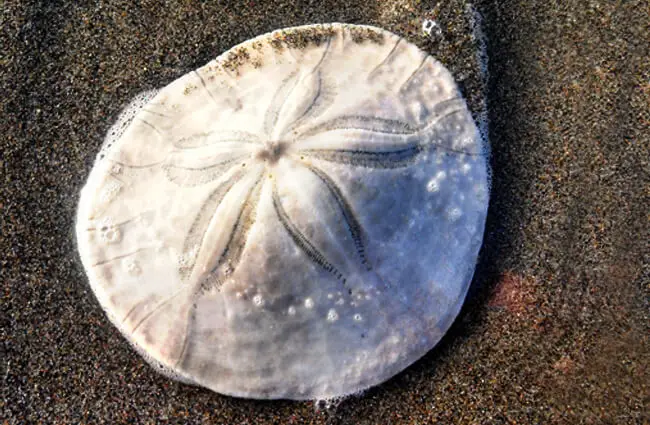

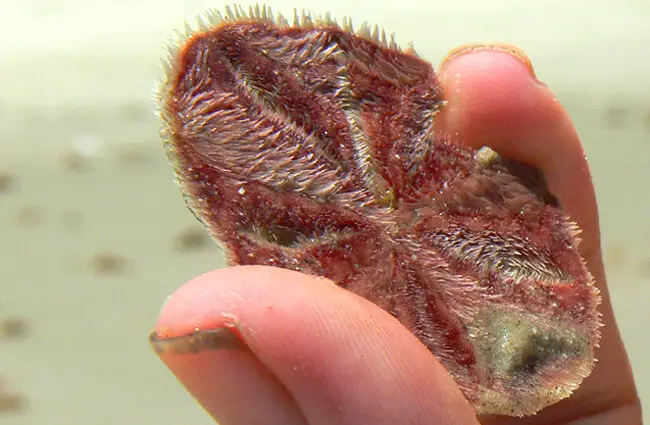
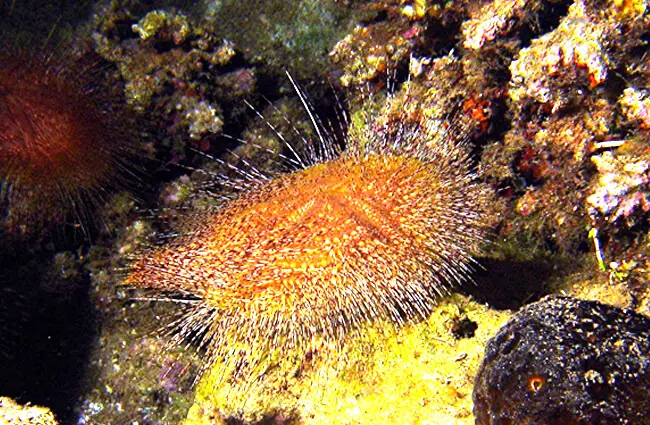


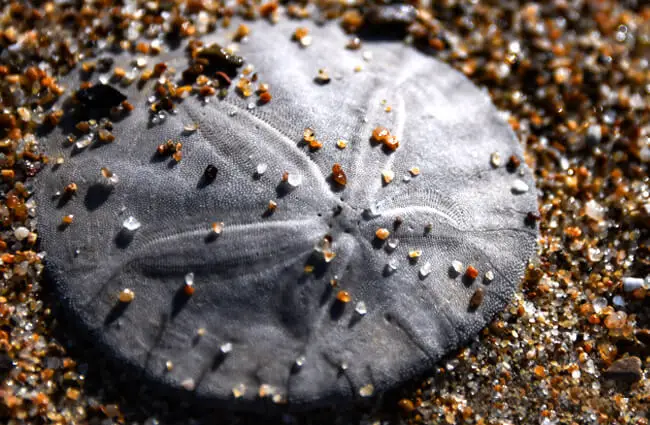
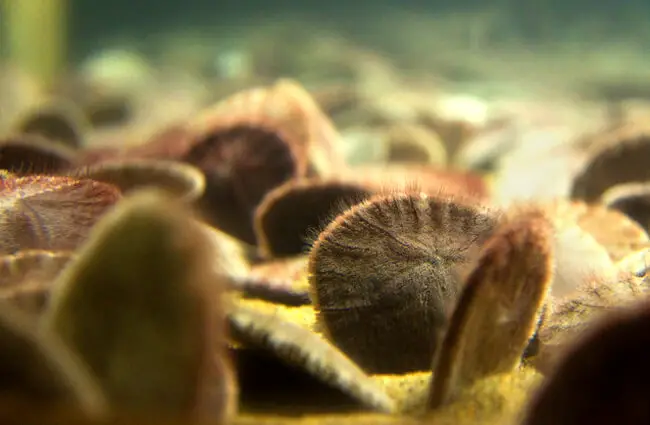

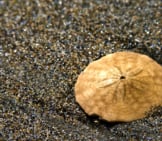


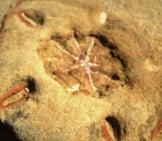
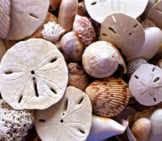
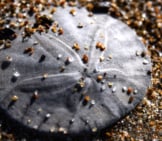
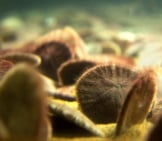
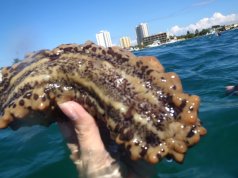
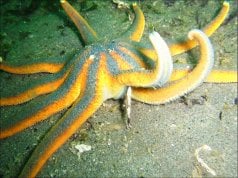
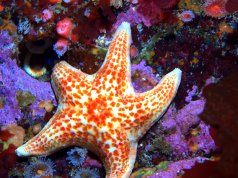










![Red Angus Closeup of a beautiful Red Angus cowPhoto by: U.S. Department of Agriculture [pubic domain]https://creativecommons.org/licenses/by/2.0/](https://animals.net/wp-content/uploads/2020/03/Red-Angus-4-100x75.jpg)

